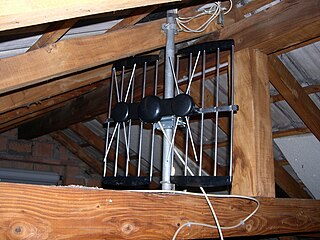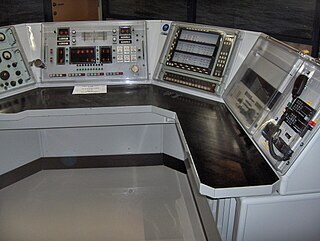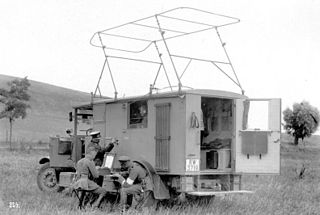The industrial, scientific and medical (ISM) radio bands are radio bands reserved internationally for the use of radio frequency (RF) energy for industrial, scientific and medical purposes other than telecommunications. Examples of applications in these bands include radio-frequency process heating, microwave ovens, and medical diathermy machines. The powerful emissions of these devices can create electromagnetic interference and disrupt radio communication using the same frequency, so these devices were limited to certain bands of frequencies. In general, communications equipment operating in these bands must tolerate any interference generated by ISM applications, and users have no regulatory protection from ISM device operation.

The Federal Communications Commission (FCC) is an independent agency of the United States government created by statute to regulate interstate communications by radio, television, wire, satellite, and cable. The FCC serves the public in the areas of broadband access, fair competition, radio frequency use, media responsibility, public safety, and homeland security.

Ultra high frequency (UHF) is the ITU designation for radio frequencies in the range between 300 megahertz (MHz) and 3 gigahertz (GHz), also known as the decimetre band as the wavelengths range from one meter to one tenth of a meter. Radio waves with frequencies above the UHF band fall into the super-high frequency (SHF) or microwave frequency range. Lower frequency signals fall into the VHF or lower bands. UHF radio waves propagate mainly by line of sight; they are blocked by hills and large buildings although the transmission through building walls is strong enough for indoor reception. They are used for television broadcasting, cell phones, satellite communication including GPS, personal radio services including Wi-Fi and Bluetooth, walkie-talkies, cordless phones, and numerous other applications.

The Family Radio Service (FRS) is an improved walkie-talkie radio system authorized in the United States since 1996. This personal radio service uses channelized frequencies around 462 and 467 MHz in the ultra high frequency (UHF) band. It does not suffer the interference effects found on citizens' band (CB) at 27 MHz, or the 49 MHz band also used by cordless telephones, toys, and baby monitors. FRS uses frequency modulation (FM) instead of amplitude modulation (AM). Since the UHF band has different radio propagation characteristics, short-range use of FRS may be more predictable than the more powerful license-free radios operating in the HF CB band.
The General Mobile Radio Service (GMRS) is a land-mobile FM UHF radio service designed for short-distance two-way communication. It requires a license in the United States but some GMRS compatible equipment can be used license-free in Canada. The United States permits use by adult individuals who possesses a valid GMRS license, as well as their immediate family members. Immediate relatives of the GMRS system licensee are entitled to communicate among themselves for personal or business purposes, but employees of the licensee who are not family members are not covered by the license. Non-family members must be licensed separately.

Marine VHF radio refers to the radio frequency range between 156 and 174 MHz, inclusive. The "VHF" signifies the very high frequency of the range. In the official language of the International Telecommunication Union the band is called the VHF maritime mobile band. In some countries additional channels are used, such as the L and F channels for leisure and fishing vessels in the Nordic countries.
The Global Maritime Distress and Safety System (GMDSS) is an internationally agreed-upon set of safety procedures, types of equipment, and communication protocols used to increase safety and make it easier to rescue distressed ships, boats and aircraft.

The radio spectrum is the part of the electromagnetic spectrum with frequencies from 30 Hertz to 300 GHz. Electromagnetic waves in this frequency range, called radio waves, are extremely widely used in modern technology, particularly in telecommunication. To prevent interference between different users, the generation and transmission of radio waves is strictly regulated by national laws, coordinated by an international body, the International Telecommunication Union (ITU).
The business band is the name used by U.S. radio users who utilize and scanner hobbyists who listen to the Federal Communications Commission (FCC) Industrial/Business pool frequencies. The regulations listing frequencies in this pool are contained in Subpart C of Part 90, Title 47 of the CFR.

A coastradio station is an on-shore maritime radio station which may monitor radio distress frequencies and relays ship-to-ship and ship-to-land communications.
In broadcasting and radio communications, a call sign is a unique designation for a transmitter station. In the United States of America, they are used for all FCC-licensed transmitters. A call sign can be formally assigned by a government agency, informally adopted by individuals or organizations, or even cryptographically encoded to disguise a station's identity.

An amateur radio station is a radio station designed to provide radiocommunications in the amateur radio service for an amateur radio operator. Radio amateurs build and operate several types of amateur radio stations, including fixed ground stations, mobile stations, space stations, and temporary field stations. A slang term often used for an amateur station's location is the shack, named after the small enclosures added to the upperworks of naval ships to hold early radio equipment and batteries.

Spectrum management is the process of regulating the use of radio frequencies to promote efficient use and gain a net social benefit. The term radio spectrum typically refers to the full frequency range from 3 kHz to 300 GHz that may be used for wireless communication. Increasing demand for services such as mobile telephones and many others has required changes in the philosophy of spectrum management. Demand for wireless broadband has soared due to technological innovation, such as 3G and 4G mobile services, and the rapid expansion of wireless internet services.
The 2200 meter or 136 kHz band is the lowest frequency band in which amateur radio operators are allowed to transmit. It was formally allocated to amateurs at the 2007 World Radiocommunication Conference (WRC-07). The band is available on a secondary basis in all ITU regions with the limitation that amateur stations have maximum radiated power of 1 Watt effective isotropic radiated power.
The General Radiotelephone Operator License (GROL) is a license granted by the U.S. Federal Communications Commission (FCC). The GROL does not convey the authority to operate an amateur radio station, for which the FCC has a separate licensing system, nor is it required for any engineering jobs in radio and television broadcasting. However, some services such as aviation, marine and international fixed public stations still require repair and maintenance to be performed by a person holding a GROL.

Land mobile service is – in line to ITU Radio Regulations – a mobile service between base stations and land mobile stations, or between land mobile stations.

KPH is a public coast radio station on the West Coast of the United States. For most of the 20th century, it provided ship to shore communications including telegrams and marine telex service. The station discontinued commercial operation in 1998, but is operated occasionally as a historic service - its signal can be tuned in throughout a large portion of the western hemisphere.

Amateur radio, also known as ham radio, describes the use of radio frequency spectrum for purposes of non-commercial exchange of messages, wireless experimentation, self-training, private recreation, radiosport, contesting, and emergency communication. The term "amateur" is used to specify "a duly authorised person interested in radioelectric practice with a purely personal aim and without pecuniary interest;" and to differentiate it from commercial broadcasting, public safety, or professional two-way radio services.
Call signs in the United States are identifiers assigned to radio and television stations, which are issued by the Federal Communications Commission (FCC) and, in the case of most government stations, the National Telecommunications and Information Administration (NTIA). They consist of from 3 to 9 letters and digits, with their composition determined by a station's service category. By international agreement, all call signs starting with the letters K, N and W, as well as AAA-ALZ, are reserved exclusively for use in the United States.
An on-board communication station or on-board communication radio station is – according to article 1.79 of the International Telecommunication Union's Radio Regulations – "A low-powered mobile station in the maritime mobile service intended for use for internal communications on board a ship, or between a ship and its lifeboats and life-rafts during lifeboat drills or operations, or for communication within a group of vessels being towed or pushed, as well as for line handling and mooring instructions".












